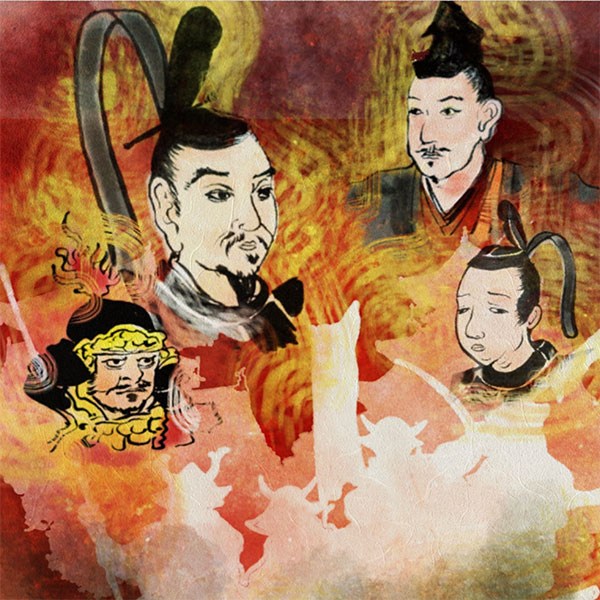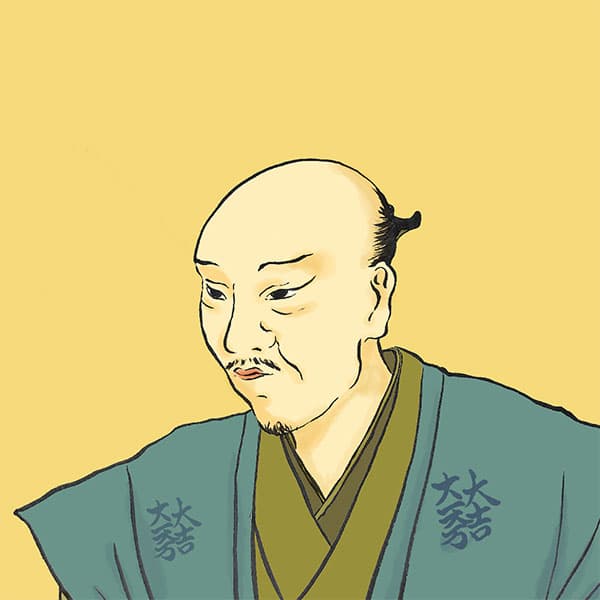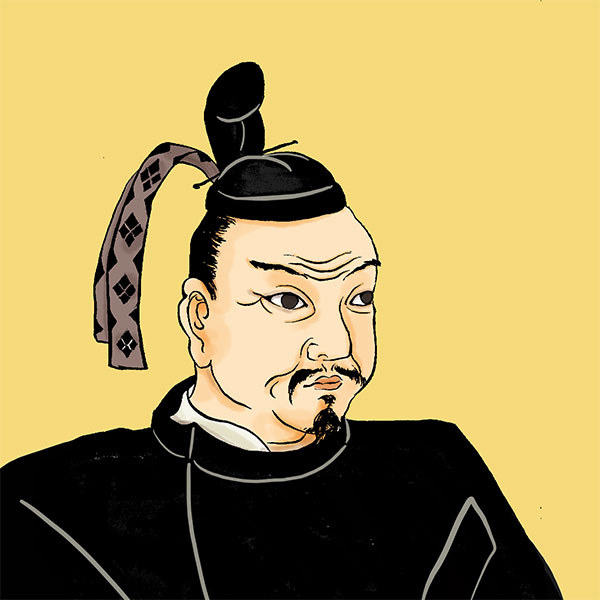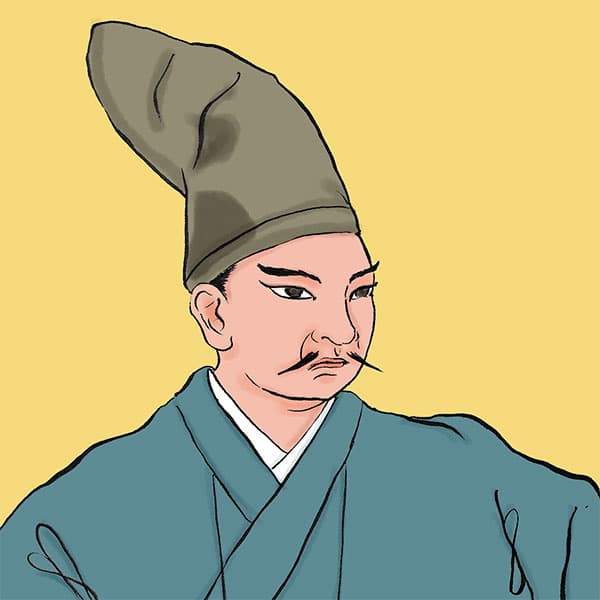Battle of Fushimi Castle (1/2)A fierce battle that could be called a “prelude” to the Battle of Sekigahara

Battle of Fushimi Castle
- Article category
- case file
- Incident name
- Battle of Fushimi Castle (1600)
- place
- Kyoto
- Related castles, temples and shrines

Fushimi Momoyama Castle
In mid-July 1600, 40,000 Western troops led by Hideie Ukita and others attacked Fushimi Castle (present-day Fushimi Ward, Kyoto City, Kyoto Prefecture), which was guarded by Mototada Torii, a senior vassal of Tokugawa Ieyasu. The Battle of Fushimi Castle can be called a prelude to the Battle of Sekigahara. Despite Mototada's small army, he fought bravely, and you can get a glimpse of his struggle from the ``blood ceiling'' that remains at Yogen-in temples in Kyoto. This time, I will explain about the Battle of Fushimi Castle.
Background of the Battle of Sekigahara
The Battle of Fushimi Castle is known as a prelude to the Battle of Sekigahara. Why did the Battle of Sekigahara occur in the first place?
After Toyotomi Hideyoshi's death in 1598, the government was run by a council of Toyotomi vassals and powerful daimyo. This was based on Hideyoshi's will and is known as the ``Five Elders and Five Magistrates'' system. The five elders were Tokugawa Ieyasu, Mori Terumoto, Maeda Toshiie, Ukita Hideie, and Uesugi Kagekatsu (Maeda Toshiie was followed by his son Toshinaga), and the five magistrates were Ishida Mitsunari, Asano Nagamasa, Nagatsuka Masaie, Maeda Geni, There are 5 people including Nagamori Masuda. The Godairo is the highest authority in the government that decides on important political matters, and is similar to what we would call a minister today. The five magistrates were the practical officials in charge of the judiciary, civil engineering, administration, religion, and finance. These 10 people supported Toyotomi Hideyori, the heir of the Toyotomi family, who was only 6 years old.
However, the Toyotomi family was by no means monolithic. In the Toyotomi administration, there was originally a conflict between the military-related factions, such as Kato Kiyomasa and Fukushima Masanori, and the literary factions, including Ishida Mitsunari, who were in charge of political affairs. Toshiie Maeda worked hard to coordinate this, but Toshiie died just eight months after Hideyoshi's death, and the conflict between the two factions accelerated. Immediately after Toshiie's death, the ``Ishida Mitsunari attack'' occurred, in which Ishida Mitsunari was attacked by seven generals, including Kiyomasa Kato, Masanori Fukushima, Nagamasa Kuroda, and Takatora Todo. Although Mitsunari managed to escape, he was removed from his magistrate position and forced to live in seclusion at Sawayama Castle in Omi Province (Shiga Prefecture).
Ieyasu took advantage of this conflict between the Mudan faction and the Bunji faction. Ieyasu was steadily gaining power as the head of the Five Elders, and through his marriage policy, he married off his adopted daughters to the adopted children of Kiyomasa Kato, Nagamasa Kuroda, and Masanori Fukushima, increasing his relationships with the Budan faction.
Toshinaga Maeda devised an assassination plan to stop Ieyasu's rise to power. On September 7, 1599, when Ieyasu visited Osaka Castle, where Toyotomi Hideyori was staying, to celebrate the Chrysanthemum Festival, he planned to attack Ieyasu, but one of the five magistrates, Masuda, The plan failed due to Nagamori's secret information. Ieyasu headed to conquer Kaga, which was ruled by the Maeda family, but due to the Maeda family's desperate defense, the battle did not occur.
In the midst of all this hectic activity, Ieyasu moved to the Nishinomaru area of Osaka Castle. Ieyasu was going against Hideyoshi's will to stay at Fushimi Castle, but at this point Ieyasu's political opponents had almost been eliminated from the center, and no one openly opposed him. Ieyasu steadily increased his allies by adding and transferring feudal lords from within the castle at his own discretion.
The Uesugi Conquest, which led to the Battle of Sekigahara
The next person Ieyasu set his sights on was Kagekatsu Uesugi, who had moved to Aizu with 1.2 million koku and was working on building a new castle in Aizu. After changing countries, Kagekatsu moved to Wakamatsu Castle, but due to its poor location, he proceeded with the construction of Kamizashi Castle (Aizuwakamatsu City, Fukushima Prefecture). It is said that the reason was to make it easier to govern Aizu or to increase military power, but for Ieyasu, it was enough to raise suspicions, or even accusations, of rebellion.
In April 1600, Ieyasu sent a messenger to Kagekatsu and asked him, ``If you have no intention of rebelling, please submit a letter of oath and go to Kyoto to clear your suspicions.'' In response, Kanetsugu Naoe sent a ``Naoe Letter'' to refute this. He had no intention of rebelling, explained that he needed time to take control of Aizu and that it would be difficult to get to Kyoto because of the heavy snow, and appealed to the people not to believe the false rumors. However, this Naoe letter was quite sarcastic and was meant to provoke Ieyasu. Naturally, Ieyasu was furious. He embarks on the Uesugi conquest (Aizu conquest).
However, since the original text of this Naoe Letter does not remain, there are theories that it may be a forgery, or that it may have been tampered with in later generations. However, it is true that Ieyasu and Kagekatsu were enemies. Ieyasu wanted to subjugate Uesugi in order to further expand his power, so if the Naoe letter was true, it would have been a good excuse, and even if Ieyasu did not have it, he would not be able to go to Kyoto easily. Sho.
Regarding the conquest of Uesugi, there was a pact in advance between the Uesugi family and Mitsunari Ishida, and the Uesugi family provoked Ieyasu to launch the Uesugi conquest, thereby attracting the Tokugawa army to Aizu, and at that time, Mitsunari moved to Osaka. There is a theory that they raised troops and attempted a pincer attack. However, this is said to have no basis in primary sources and is a fabrication based on later military records.
Having decided to conquer Uesugi, Ieyasu heads for Aizu with Masanori Fukushima and other daimyo patrons of Toyotomi, Naomasa Ii, and Tadakatsu Honda as the advance party. Ieyasu himself departed from Osaka Castle on June 16th and stopped at his base, Fushimi Castle. Torii Mototada was the protector of Fushimi Castle. Along with Matsudaira Ietada and Matsudaira Chikamasa, he had 3,000 soldiers.
Loyal warrior Mototada Torii
Here I will briefly introduce Mototada Torii, a key figure in the Battle of Fushimi Castle. Mototada was a loyal vassal who had been following Yasushi Tokugawa as his close apprentice ever since he was a hostage of the Imagawa family. During the Battle of Mikatagahara, he was injured in his left leg by an enemy attack, and after that he began to limp with his left leg, but he continued to participate in battles such as the Battle of Nagashino and the Tensho Migo Rebellion. During the Tensho Migo War, 2,000 soldiers repulsed the Hojo army that tried to attack Ieyasu from behind. When Ieyasu was transferred to the Kanto region, he was given 40,000 koku in Shimousa Province (northern and western Chiba Prefecture). His military exploits were famous, and Toyotomi Hideyoshi almost awarded him an official rank, but he said, ``I cannot serve the two princes (Hideyoshi and Ieyasu), and I do not have the ability to serve Lord Hideyoshi.'' It's a matter of loyalty to say no.
A famous episode about Mototada is when Ieyasu visited Fushimi Castle before going on the Uesugi conquest. According to the Tsuneyama Kidan written in the middle of the Edo period, Ieyasu had a drink with Mototada at this time. When Ieyasu told him that he could not leave only a few soldiers in the castle, Mototada replied, ``Aizu is a formidable enemy, so please bring as many soldiers as possible with you.Fushimi will be fine with me alone.'' ``If nothing happens while you are away (Mitsunari raising an army), we will be able to meet again, but if something happens, tonight will be the night we say goodbye forever.'' In response, Ieyasu says he could not hide his tears.
If Ieyasu were to go on a conquest of Uesugi, it is highly likely that Mitsunari Ishida and others would raise an army, and in that case, Fushimi Castle, a key transportation point and Ieyasu's base in the Kamigata region, would become the site of a fierce battle. If that happens, there is a high possibility that Mototada will die. In other words, it's like telling them to become dead soldiers. I wonder what Ieyasu's suicide must have been like. The episode about the two warlords has a very romantic feel to it, but unfortunately there is a strong theory that it was created later.
How did Ieyasu look to the future when he entered Fushimi Castle? There is a theory that he thought that Mitsunari would raise an army during the conquest of Uesugi, so he dared Mitsunari to attack Fushimi Castle in order to gain a cause to defeat Mitsunari and his group. There is also a theory that Fushimi Castle fell as a result, as they did not think that such a large army would attack.
Battle of Fushimi Castle ① Ishida Mitsunari raises an army in the absence of Tokugawa Ieyasu
After Tokugawa Ieyasu left Osaka and moved to Kanto to conquer Uesugi, Ishida Mitsunari began preparing to raise an army. Then, on July 17, the three magistrates from Mitsunari's side, Geni Maeda, Nagamori Masuda, and Masaie Nagatsuka, who were at Osaka Castle, chased out the rusuiyaku that Ieyasu had left in Osaka Castle and occupied Osaka Castle. He issued a letter of impeachment against Ieyasu, denounced him, and called on the feudal lords to hunt down Ieyasu.
The article on the Battle of Fushimi Castle continues.

- WriterNaoko Kurimoto(Writer)I am a former travel industry magazine reporter. I have loved history, both Japanese and world history, since I was a child. I usually enjoy visiting temples and shrines, especially shrines, and often do ``pilgrimages to sacred places'' themed around historical figures. My favorite military commander is Ishida Mitsunari, my favorite castle is Kumamoto Castle, and my favorite castle ruins is Hagi Castle. My heart flutters when I see the ruins of battle castles and the stone walls of castle ruins.







